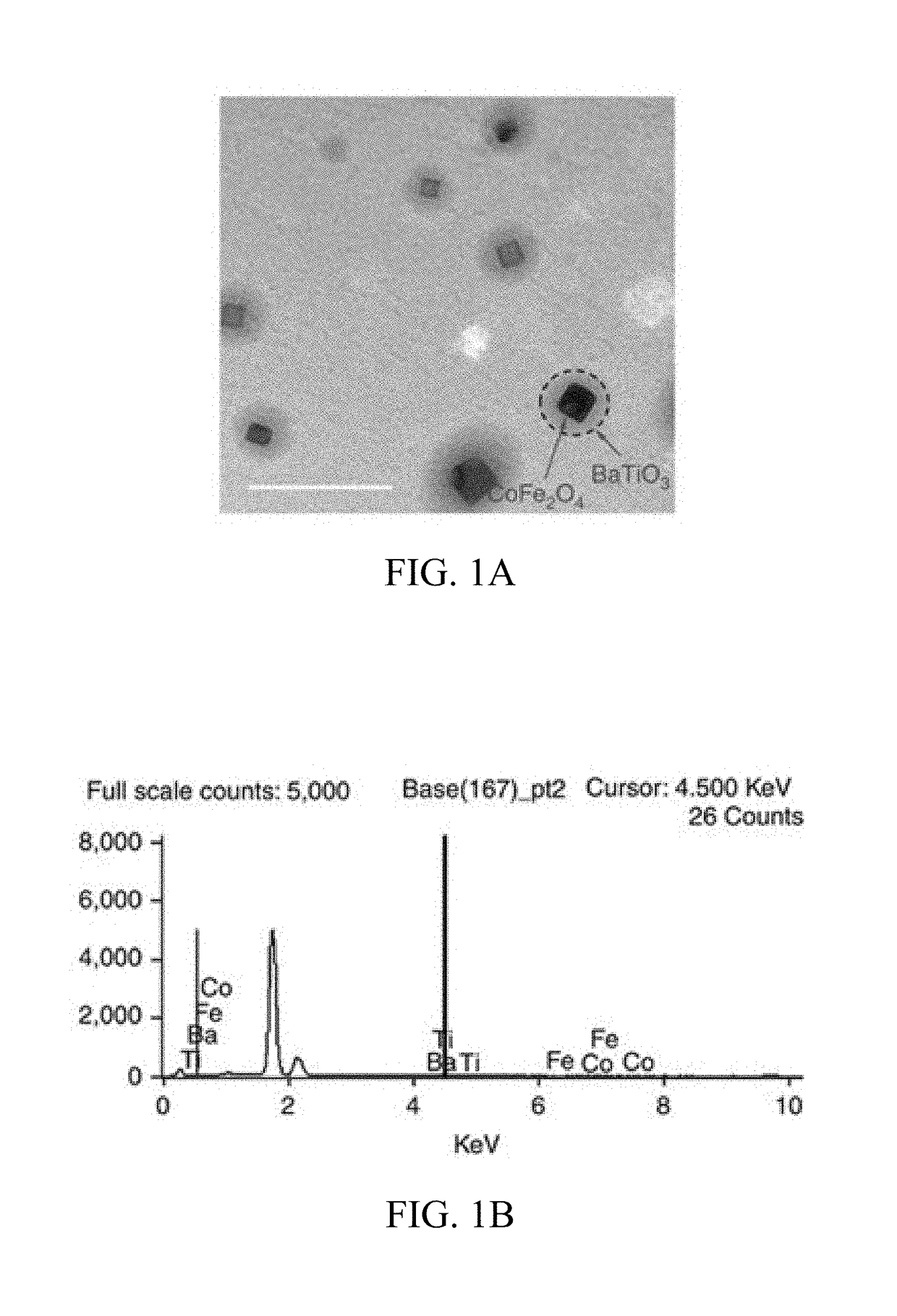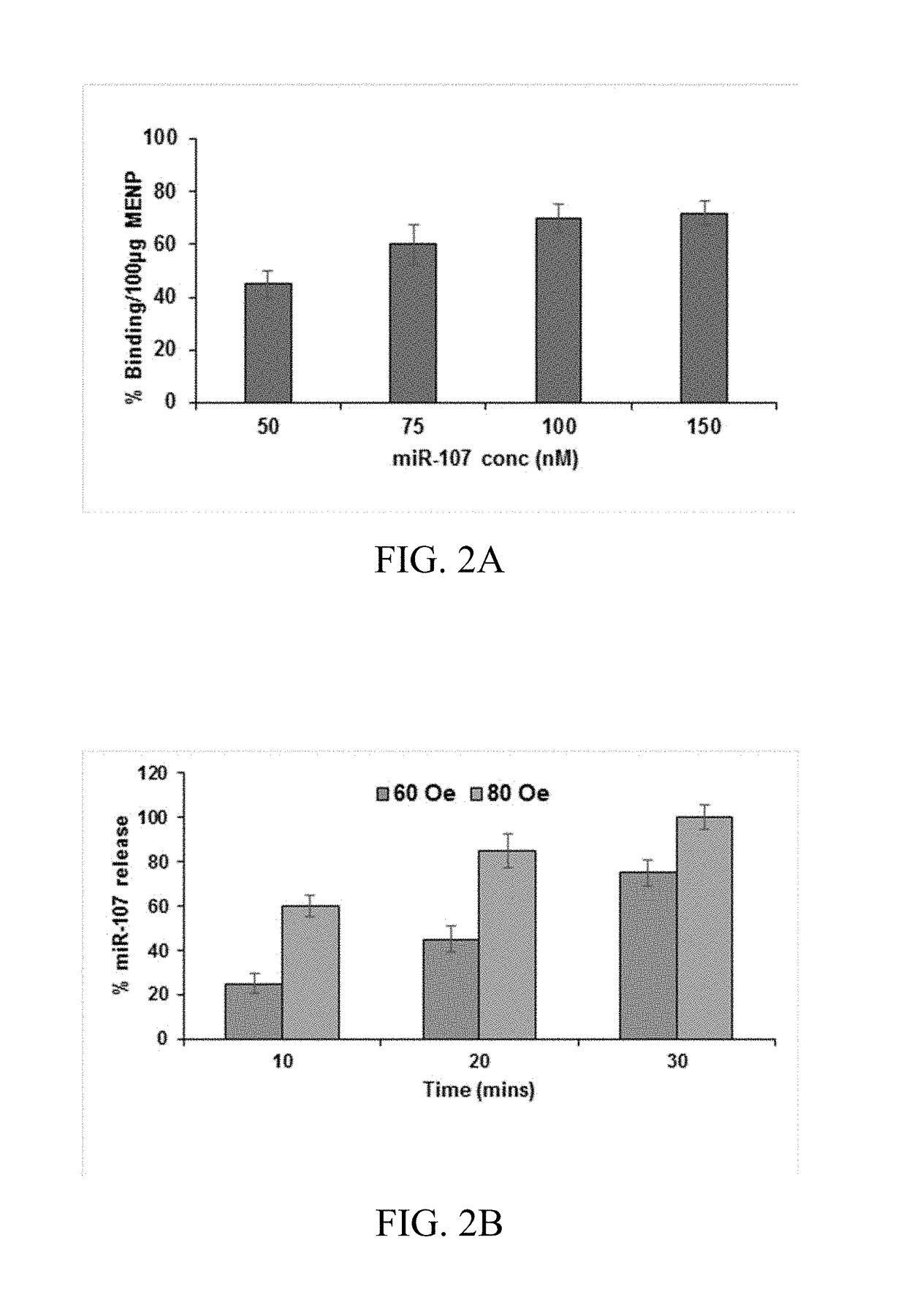Compositions and methods for treating HIV-associated neurocognitive disorders
a neurocognitive disorder and cognitive disorder technology, applied in the field of cognitive disorders for treating hiv-associated neurocognitive disorders, can solve the problems of increasing the incidence and severity of hand, neuronal impairment, and exacerbate the incidence of hand
- Summary
- Abstract
- Description
- Claims
- Application Information
AI Technical Summary
Benefits of technology
Problems solved by technology
Method used
Image
Examples
example 1
on and Characterization of MENPS
[0086]MENPs utilized as nanocarriers for BBB delivery were synthesized. Particle size, shape, charge distribution, phase purity, crystallinity, functionality, and magnetism of MENPs were studied using transmission electron microscope (TEM), X-ray diffraction (XRD), Zeta-sizer, Raman, and Vibrating sample magnetometer (VSM). TEM studies indicated that ferromagnetic MENPs are of ˜20±3 nm in size (FIG. 1a), no agglomeration and exhibited all atomic planes of both precursors, i.e., CFO (CoFe2O4) and BTO (BaTiO3), were perfectly crystalline and showed all functional groups of CFO and BTO (FIG. 1b).
example 2
f MIR-107 and its Release from MENPs
[0087]Binding kinetics with respect to different concentrations of miR-107 was performed using 100 μg of MENPs (FIG. 2A). Sample were incubated in phosphate buffered saline (PBS) (pH-7.4) and kept on vertical rotator under constant rotation (200 rpm) for 30 minutes. Results showed a concentration dependent increase in binding profile and maximum of 70% miR-107 binding was achieved at 100 nM. Release kinetics of miR-107 from MENPs was studied using UV spectroscopy at 260 nm. 100 nM of miR-107 was incubated with 100 μg of MENPs in 1 mL PBS (pH 7.4) for 30 mins and its release kinetics performed using alternating current magnetic field via electromagnetic coil at various time points (i.e., 10, 20, and 30 minutes). Result showed that alternating current stimulation causes polarization in MENPs and almost 100% release of miR-107 was accomplished using 100 Hz frequency at 80 Oe magnetic field compared to 75% at 60 Oe in 30 mins (FIG. 2B).
example 3
NPS Did not Affect BBB Integrity
[0088]In-vitro BBB model was developed using brain microvascular endothelial cells, astrocytes and pericytes. The integrity of BBB was examined by measuring the TEER values before and after addition of free WA (2 μM) and free MENPs (100 μg) to the apical chamber of in vitro BBB model. There was no difference in TEER values when compared with MENPs or WA treatment alone (FIG. 3a) under the influence of external magnetic field (0.8 T). Free WA could not cross the BBB without being bound to MENP and therefore, no changes in the Aβ-secretion in SH-APP cells were observed (WA without MENP in the apical chamber) in comparison to the untreated control cells grown in the basal chamber of the BBB model (FIG. 3b).
PUM
| Property | Measurement | Unit |
|---|---|---|
| molecular weight | aaaaa | aaaaa |
| sizes | aaaaa | aaaaa |
| sizes | aaaaa | aaaaa |
Abstract
Description
Claims
Application Information
 Login to View More
Login to View More - R&D
- Intellectual Property
- Life Sciences
- Materials
- Tech Scout
- Unparalleled Data Quality
- Higher Quality Content
- 60% Fewer Hallucinations
Browse by: Latest US Patents, China's latest patents, Technical Efficacy Thesaurus, Application Domain, Technology Topic, Popular Technical Reports.
© 2025 PatSnap. All rights reserved.Legal|Privacy policy|Modern Slavery Act Transparency Statement|Sitemap|About US| Contact US: help@patsnap.com



